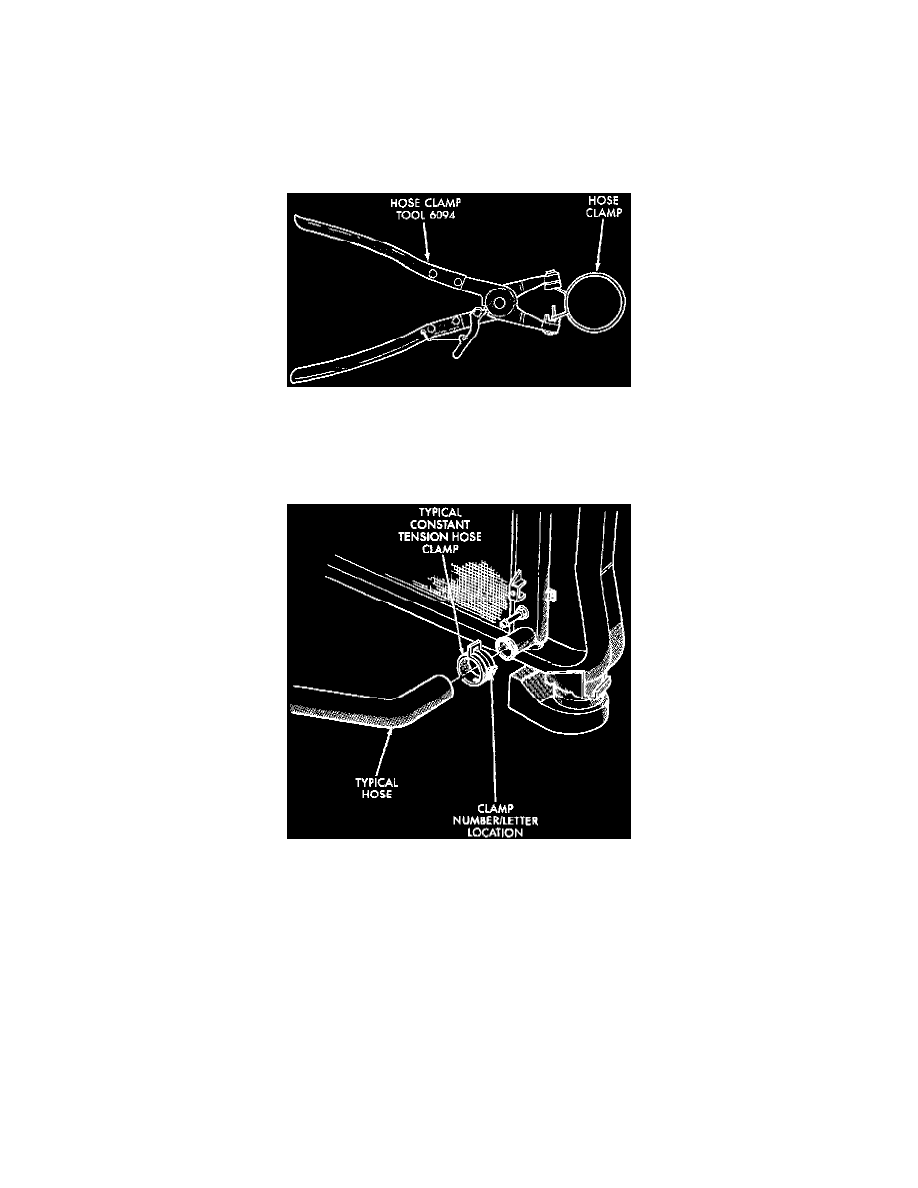RAM 2500 Truck 4WD V8-5.9L VIN Z LDC (1998)

Radiator Hose: Description and Operation
GENERAL INFORMATION
Rubber hoses route coolant to and from the radiator, intake manifold and heater core. Radiator lower hoses are spring-reinforced to prevent collapse
from water pump suction at moderate and high engine speeds.
Inspect the hoses at regular intervals. Replace hoses that are cracked, feel brittle when squeezed or swell excessively when system is pressurized. The
use of molded replacement hoses is recommended. When performing a hose inspection, inspect radiator lower hose for proper position and condition
of spring.
Hose Clamp Tool-Typical
WARNING: Constant tension hose clamps are used on most cooling system hoses. When removing or installing, use only tools designed for
servicing this type of clamp, such as special clamp tool (NUMBER 6094). Snap-on clamp tool (NUMBER HPC-20) may be used for larger
clamps. Always wear safety glasses when servicing constant tension clamps.
Clamp Number/Letter Location
CAUTION: A number or letter is stamped into the tongue of constant tension clamps. If replacement is necessary, use only an original equipment
clamp with a matching number or letter.
Ordinary worm gear type hose clamps (when equipped) can be removed with a straight screwdriver or a hex socket. To prevent damage to hoses or
clamps, the hose clamps should be tightened to 4 Nm (34 inch lbs.) torque. Do not over tighten hose clamps.
For all vehicles: In areas where specific routing clamps are not provided, be sure that hoses are positioned with sufficient clearance. Check clearance
from exhaust manifolds and pipe, fan blades, drive belts and sway bars. Improperly positioned hoses can be damaged, resulting in coolant loss and
engine overheating.
